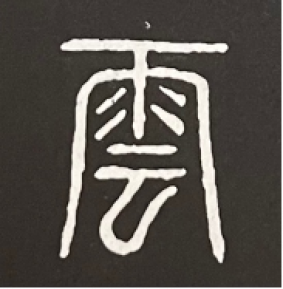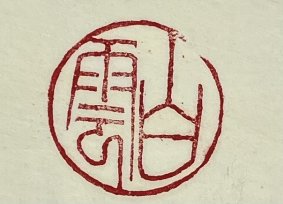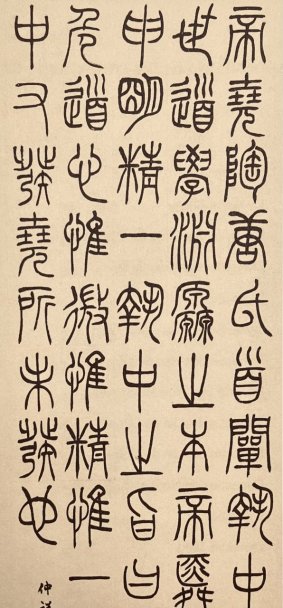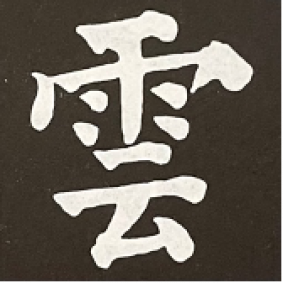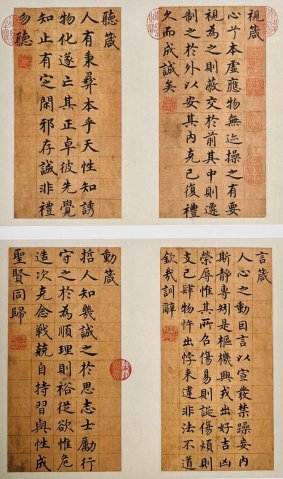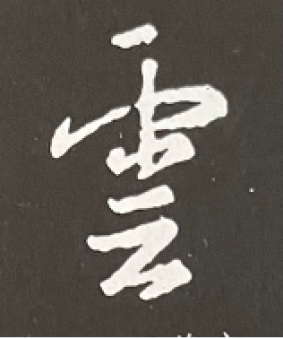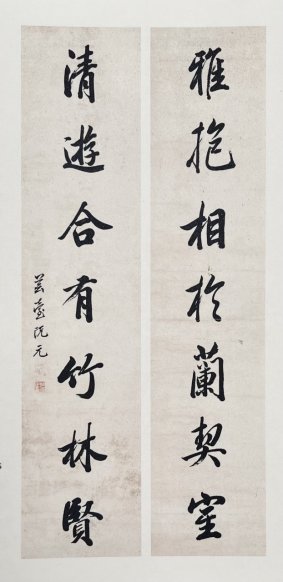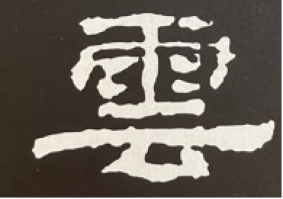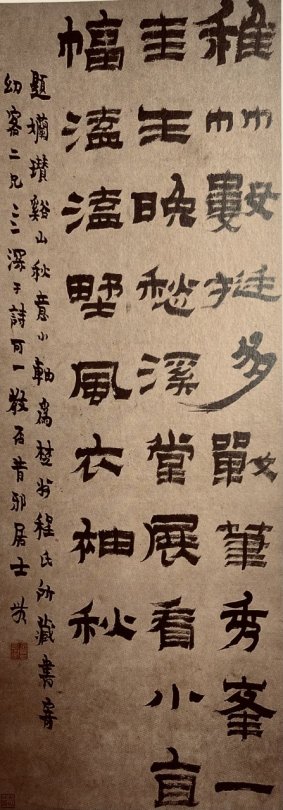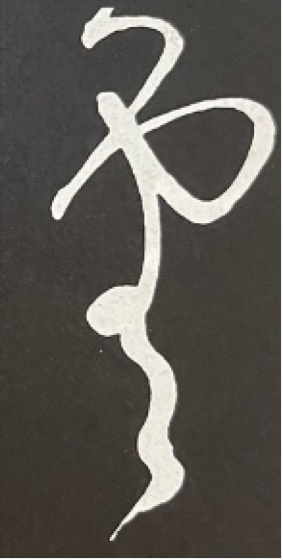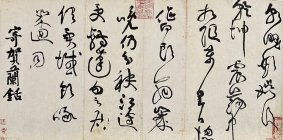Writing Styles
The five writing styles still used today : illustration with the character 雲 “yun” which means cloud. In simplified Pinyin yun is written 云
The Seal
The seal (篆书 zhuanshu), close to the design, which was engraved on the scales of turtles and the bones of buffaloes and which is still used in the engraving of seals
Wu Xizai (1799-1870)
Fac-similé de la calligraphie de Wanbai Shanren
Rouleau sur papier
39,8 x 122,7 cm
Regular
The regular (楷书 kaishu) easy to learn and read, it is the model writing and is used daily
Shen Du (1357-1434)
"Quatre devises"
Beijing, Palace Museum
The Current
The current (行书xingshu) of common use, of faster execution it can be more or less linked
Ruan Yuan (1764-1849)
Diptyque antithétique de 7 caractères
29 x 125 cm
Chancery
The chancery or scribes script (隶书 lishu) creating a simpler and faster graphical language
Jin Nong (1687-1764)
Poème dédicacé à la peinture
35 x 96,8 cm
Shanghai, Museum
The Cursive
The cursive (草书 caoshu) greater freedom of execution and connection sometimes by large strides as a kind of continuous dance. To be able to read it, you have to have practiced it
Huang Tingjian (1045-1105)
Poème de Du Fu à He Lanxian
34,7 x 69,6 cm
Beijing, Palace Museum
- L’art chinois de l’écriture, Jean-François Billeter, Seuil Editions, 2001
- Vide et Plein, François Cheng, Seuil Editions, 2021
- Paysage d’hiver, Christine Jordis, Albin Michel Editions, 2016
- Le Trésor des Lettrés, Lucien X. Polastron, Imprimerie nationale Editions, 2010
- Calligraphie chinoise, Lucien X. Polastron, Imprimerie nationale Editions, 2011

